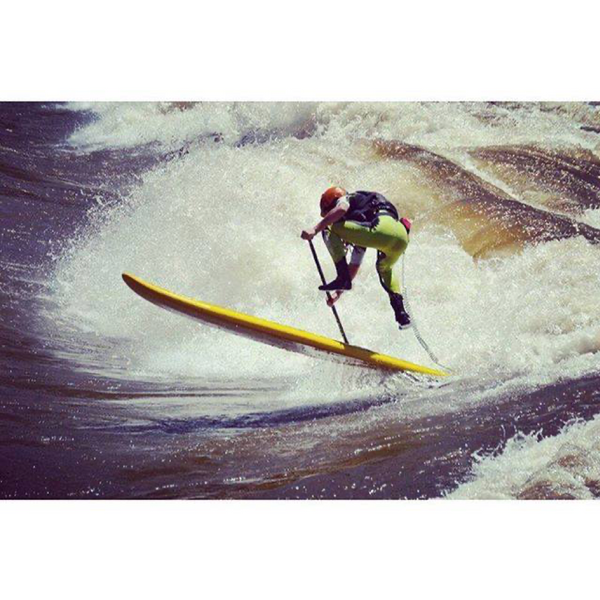
Introducing Paddle Boards Built for the Toughest Challenges
How did an accident on the river birth a SUP manufacturer that makes the most durable hard and inflatable paddle boards on the planet?
Forged on the River, Inspired by Adventure

For over a decade, Glide SUP has stood at the forefront of crafting ultra-durable, all-around paddle boards. But how did we earn this unique reputation? Well, it all began with a story – the story of our founder, Ken Driscoll.
Ken wasn't just an ordinary adventurer; he was a world-class whitewater kayaker who pushed the limits of exploration. However, a fateful incident changed his course forever. A hard landing from a 50-foot waterfall left him with a broken back, forcing him to seek alternative means to navigate the waters he loved.
The Birth of a Vision: Toughness Meets Innovation

Unable to comfortably fit in a kayak cockpit post-injury, Ken turned to stand-up paddle boarding (SUP). Drawing from his surfing background, he envisioned riding the powerful currents while standing tall on a sturdy board. But there was a problem – traditional epoxy boards couldn't withstand the rigors of rough waters, often succumbing to collisions with rocks.
Driven by his unwavering spirit, Ken embarked on a journey of innovation. After extensive experimentation with various materials, he discovered a game-changing solution – Glide Surface Shield (GSS). Originally formulated by the US Dept of Defense for submarines, GSS enhanced our SUPs' durability without compromising performance. And thus, Glide SUP was born.
Pushing the Limits: From Rapids to Renters

Our commitment to durability wasn't just about conquering whitewater; it extended to every aspect of paddle boarding. To prove the unmatched toughness of our boards, we launched the "Will it Break Wednesday" campaign. From high-speed launches to cliff drops, our boards emerged unscathed, showcasing their resilience.
Yet, our journey didn't end there. Recognizing the demand for rugged paddle boards extended beyond whitewater enthusiasts, we turned our attention to another demanding group – paddle board renters. These boards faced relentless abuse, from parking lot mishaps to rocky shore collisions. But with Glide SUPs, rental operations saw a significant reduction in downtime, thanks to our boards' unmatched durability and performance.
Craftsmanship Beyond Compare: The Glide Difference

Glide paddle boards aren't just boards; they're a testament to superior craftsmanship and innovation. Each board is meticulously engineered using cutting-edge technology, such as Quad Fusion Weave Tech, ensuring optimal performance and durability.
Our commitment to excellence doesn't stop at construction; it extends to every detail. From multiple attachment points for gear to inclusive accessories like dual chamber pumps and kayak seats, we prioritize enhancing your paddling experience.
Conclusion: Experience the Glide Difference

From Ken's adversity emerged a brand that defies limits and exceeds expectations. With a Glide SUP, you're not just buying a paddle board; you're investing in a legacy of toughness and innovation.
Ready to embark on your paddle boarding adventure? Order your Glide inflatable paddle board today, backed by a 30-day guarantee. Discover why Glide SUPs stand head and shoulders above the rest – because when it comes to quality, there's no compromise.


